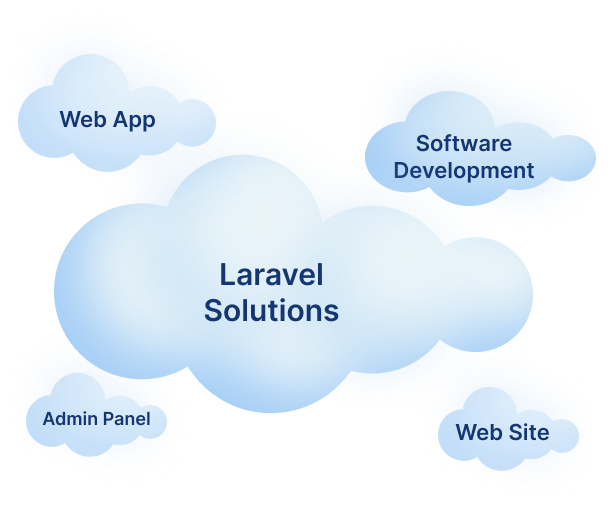Interview questions for python developers
What is Python?
Python is a popular high-level interpreted programming language that is easy to learn and understand. It is compatible with several programming paradigms, such as functional, object-oriented, and procedural programming. Python is a popular choice for a wide range of applications, from web development and data analysis to artificial intelligence and scientific computing, because of its simple and easy-to-learn syntax.
Which are Python's salient features?
Python's success and versatility can be attributed to a number of important features it provides. These consist of an interpreter-based execution mechanism, high-level data structures, support for several programming paradigms, dynamic typing, automatic memory management, and a large standard library. Python's extensive standard library, ease of reading and writing, and vibrant third-party package ecosystem make it an excellent choice for quick development and prototyping.
What makes a list different from a tuple in Python?
Lists and tuples are sequential data structures in Python, but they differ significantly in a few important ways. Tuples are immutable, meaning they cannot be changed once generated, although lists' elements can be changed after they are produced. Tuples are frequently used for fixed collections of related data, whereas lists are usually used for collections of items that may need to be updated. Square brackets [] are used to build lists, whereas parentheses () are used to make tuples.
Why does Python classes have the __init__() method?
When a new instance of the class is generated, the __init__() function in Python classes is a unique method that is used to initialize object attributes. It lets you set the initial settings for object properties and is called automatically when an object is instantiated. This function is essential to object initialization since it makes sure that objects are created with the correct configuration.
In Python, what are decorators?
With decorators, a potent Python feature, you can expand or change a function or method's functionality without altering the code. Implemented as functions, decorators take another function as input, modify it with new functionality, and then return a new function. They are frequently employed in processes like error handling, caching, authentication, and logging. Decorators offer a simple and straightforward method of improving the functionality of existing code without adding boilerplate or repeating logic to it.
What distinguishes Python's __str__() and __repr__() functions from one another?
Although they have different uses, Python's __str__() and __repr__() functions are both used to represent objects as strings. The str() function calls the __str__() method, which returns an object's string representation that is easy to use. Usually, it is utilized for output formatting or printing for end users or other display needs. Conversely, the repr() function calls the __repr__() method, which aims to return a clear string representation of the object that, if it's feasible, can be used to recreate it with Python code.
In Python, what are generators?
Python generators are routines that allow you to use the yield keyword to haphazardly generate a series of values. Generators can yield many values at once, stopping execution between each yield statement, in contrast to normal functions that return a single result and then terminate. This makes it possible to use memory effectively, particularly when working with big datasets or endless sequences. Large file processing, Fibonacci sequence generation, and iterator implementation are common uses for generators.
Describe the Python inheritance concept.
A key idea in object-oriented programming (OOP) is inheritance, which lets a class inherit methods and properties from a base class, also known as the parent class. The class statement is used to implement inheritance in Python, and the parent class is supplied after the class name in parenthesis. Subclasses can extend or override any methods and attributes that they inherit from their parent class as appropriate. Because it makes it possible to create specialized classes that inherit common behavior from a shared base class, inheritance encourages code reuse, modularity, and extensibility.
What is the Python super() function used for?
In Python, you can access a parent class's methods and properties from within a subclass by using the super() function. It offers a mechanism to call methods declared in the parent class, enabling subclass behavior to be overridden and code reused. You can delegate method calls to the parent class and guarantee that the parent and subclass methods are executed correctly by invoking super() with the subclass instance and method name as parameters. This encourages a tidy and well-organized code structure and makes inheritance hierarchies easier to construct.
How does Python's exception handling function?
Python's exception handling feature enables you to deal with mistakes and unforeseen circumstances that may arise while a program is running gracefully. To capture and handle exceptions, the try, except, finally, and raise statements are used. The code that might cause an exception is contained in the try block, and the except block indicates what to do if one does occur. Furthermore, cleanup code can be executed in the finally block even if an exception was raised. With Python's exception handling feature, you can develop dependable code that maintains program stability and handles failures with grace.
In Python, what is the Global Interpreter Lock (GIL)?
In multi-threaded Python systems, the Global Interpreter Lock (GIL) is a mutex that guards access to Python objects and stops several native threads from processing Python bytecodes concurrently. Because only one thread may execute Python bytecode at a time, the GIL can cause performance bottlenecks in CPU-bound programs even if it guarantees thread safety and streamlines memory management. Nevertheless, because Python threading releases the GIL during I/O operations, it is still advantageous for asynchronous and I/O-bound processes.
Describe the Python context manager idea.
Python context managers are objects that, by utilizing the with statement to define the entrance and exit points of a block of code, provide resource management. The methods __enter__() and __exit__(), which are invoked upon entering and departing the with block, respectively, are implemented by them. In order to make sure that resources are acquired and released correctly even in the case of exceptions or faults, context managers are frequently employed for activities like file handling, database connections, and thread synchronization.
What are Python decorators and how do they operate?
Python's decorators are an incredibly useful feature that let you expand or change the behavior of functions or methods without altering their source code. Implemented as functions, decorators take another function as input, modify it with new functionality, and then return a new function. They are frequently employed in processes like error handling, caching, authentication, and logging. Decorators offer a simple and straightforward method of improving the functionality of existing code without adding boilerplate or repeating logic to it.
What are the benefits of developing websites with Python?
a large selection of web frameworks that speed up and simplify web development, such Pyramid, Flask, and Django.
A robust ecosystem of modules and frameworks for data analysis, machine learning, and web scraping.
Clear and readable syntax encourages the maintainability and clarity of the code.
cross-platform compatibility, which enables online apps to function flawlessly across several OS systems.
Good community support and ongoing development that guarantees updates, documentation, and resources are available.
In Python projects, how are dependencies managed?
In Python projects, virtual environments and package managers like pip are usually used for dependency management. Installing, updating, and removing Python packages from the Python Package Index (PyPI) is possible with Pip, the default package manager for Python. Installing project-specific dependencies doesn't interfere with the system-wide Python installation when you use virtual environments, which are made with tools like virtualenv or venv. These environments offer isolated environments for Python projects. Reproducibility across several projects and dependency isolation are guaranteed by this method.
How do you import Python modules and what are they?
Files with Python code that can be used again in different Python projects are called modules. They facilitate code reuse and maintainability and let you group code into logical chunks. Modules can define variables, classes, and functions that can be accessible using the import statement from other Python scripts. All you have to do is use the import keyword and the module name to import a module. Furthermore, to import particular objects from a module into the current namespace, use the from... import... syntax.
What are Python packages, and what distinguishes them from modules?
Python packages are directories that have Python modules along with a unique __init__.py file that tells Python to treat the directory like a package. Modules can be arranged in a hierarchical structure and given a namespace by packages. Packages are directories that contain several modules and perhaps sub-packages, whereas modules are single files with Python code. Large Python projects can be arranged and structured with the help of packages, which facilitates code management and maintenance.
Describe the Python notion of duck typing.
In Python, duck typing is an idea that prioritizes an object's behavior over its type. Its tenet is "If it swims like a duck, quacks like a duck, and looks like a duck, then it probably is a duck." Put differently, duck typing lets you decide if an object is appropriate for a given action based more on its behavior than its type. This method emphasizes what things can do rather than what they are, which encourages flexibility and code reuse.
What distinguishes the Python == and is operators from one another?
In Python, two objects can be compared by using the == operator to compare their values and the is operator to compare their identities. Whereas the is operator verifies whether two objects belong to the same memory location, the == operator determines whether the values of two objects are equal. == compares the objects' contents, but it also determines whether they are the same object in memory. To prevent unexpected behavior, it's crucial to utilize == for identity comparison and is for value comparison, particularly when working with changeable objects like dictionaries and lists.
What does Python's __name__ variable serve as?
Python has a unique built-in variable called __name__ that holds the name of the currently running script or module. The value of __name__ is set to "__main__" when a Python script runs, if the script is being run as the main application. The value of __name__ is set to the module name if the script is imported as a module into another script. This lets you insert code that should only run when the script is executed directly by letting you know whether a script is being executed as the main application or imported as a module.
What are Python list comprehensions and how do they operate?
Python's list comprehensions offer a condensed method for building lists from pre-existing sequences or iterables. By applying an expression to each item in an existing iterable and filtering the results according to a condition, they let you create a new list. List comprehensions adhere to the syntax [expression for item in iterable if condition] and are written inside square brackets []. For basic transformations and filtering tasks in particular, they provide a more understandable and effective substitute for conventional for loops in list creation.
What is the Python lambda keyword used for?
Lambda functions, or anonymous functions, are created in Python using the lambda keyword. Lambda functions are inline, tiny functions with a single expression and any number of parameters. They are frequently employed when a brief, tiny function is required, as when a function is passed as an argument to more complex methods like filter(), sorted(), and map(). Without requiring a complete function definition, lambda functions provide a clear and short syntax for defining basic functions.
Describe the Python idea of variable scope.
In Python, "variable scope" describes how visible and reachable variables are inside a program. The Local, Enclosing, Global, and Built-in scopes (LEGB) rule is a hierarchical scope resolution process used by Python. Local variables are those that are defined inside a function and are only accessible inside the bounds of that function. The variables defined in the enclosing function or module are known as enclosing variables. Module-level definitions of global variables allow for access from any function inside the module. Lastly, preset variables supplied by the Python interpreter are known as built-in variables.
What is the Python with statement's purpose?
Python's "with" statement creates a context manager that lets you manage resources and make sure they're cleaned up and released properly. Context managers are usually employed in scenarios like file handling, database connections, and thread synchronization where resources must be acquired and released in a predictable and controlled manner. Compared to manual resource management, the with statement is a safer and more dependable option since it guarantees resource release in the event of exceptions or errors.
In Python, what are iterators and iterables?
Any object that can be iterated over in Python is called an iterable. This means that it can be supplied to procedures like max(), min(), and sum() that need iterable inputs, or it can be used in a for loop. Among the types of iterables are sets, dictionaries, tuples, lists, and strings. The __iter__() and __next__() methods of the iterator protocol, on the other hand, are implemented by an object known as an iterator. An iterable's elements can be iterated over using iterators, which retrieve each object as needed. They enable effective and sluggish iteration over big datasets by maintaining state and tracking the current position within the iterable.
What is the Python map() function used for?
Using Python's map() method, you may apply a given function to each element in an iterable (such a list, tuple, or set) and get back a new iterable with the results. The function to apply and the iterable to apply it to are its two required arguments. When you need to calculate or apply a transformation to each element of a series and create a new sequence using the results, the map() method comes in handy. It offers a succinct and effective method of performing operations on elements without requiring explicit loops.
Describe the Python recursion idea.
Recursion is a programming method in which a function solves an issue by making direct or indirect calls to itself. Recursive functions in Python allow you to decompose large issues into smaller, easier-to-manage subproblems. Up until a base case is reached, each iterative call works on a smaller subset of the initial problem; at that time, the recursion ends and the results are returned. Recursion is a popular technique for solving issues that can be divided into smaller, identical subproblems, such as tree traversal, Fibonacci sequence generation, and factorial computation.
What are Python generators, and what distinguishes them from lists?
Python generators are routines that allow you to use the yield keyword to haphazardly generate a series of values. Generators preserve memory and enable the effective processing of huge datasets or infinite sequences. In contrast to lists, which keep all elements in memory at once, generators generate values one at a time as they are needed. Generators are useful for tasks like processing streaming data, iterating over enormous files, and designing memory-efficient algorithms because they are iterable objects that generate values on demand.
What is the Python filter() function used for?
Python's filter() function can be used to remove elements from an iterable according to a predicate function or condition. The function that specifies the filtering condition and the iterable to filter are the two arguments it accepts. Every element in the iterable is subjected to the condition by the filter() method, which then provides a new iterable that only includes the ones that meet the condition. It offers a practical method for removing entries from a series that satisfy particular requirements. Examples of these criteria include even numbers, texts that contain particular substrings, and objects that satisfy particular requirements.
In Python, what are context managers and how do you make one?
Python context managers are objects that, by utilizing the with statement to define the entrance and exit points of a block of code, provide resource management. They carry out the __enter__() and __exit__() procedures of the context management protocol. Even in the case of exceptions or errors, the __exit__() method is called when quitting the block and the __enter__() function is called upon entering the with block. Context managers can be built with the contextlib module by utilizing generating functions or decorators for context managers, or they can be created using the class syntax by implementing the context management methods.
Describe the idea of Python object-oriented programming (OOP).
The paradigm of object-oriented programming (OOP) centers on the idea of objects, which are just instances of classes. By enclosing data (attributes) and methods (functions) that manipulate that data, classes define the structure and behavior of objects. Python offers features like classes, polymorphism, inheritance, and encapsulation to facilitate object-oriented programming. Classes enable for code reuse, modularity, and abstraction by acting as blueprints for the creation of things. By representing real-world entities as objects with well-defined attributes and behaviors, object-oriented programming (OOP) encourages a more methodical and natural approach to software development.
In Python, what are instance and class variables?
Class variables in Python are variables that are defined inside a class and shared by all instances of that class. They are accessed via the class name rather than an instance of the class and are declared outside of any method definitions inside the class. Class variables are used to hold common data that is shared by all instances of the class and are shared by all instances. Contrarily, instance variables are those that are specific to every instance of a class. They may be accessed by using the instance name and are defined in the constructor function (__init__()). Individual object states are represented by instance variables, which can differ between instances.
In Python, what is method overriding?
Object-oriented programming (OOP) has a feature called method overriding that lets a subclass offer a unique implementation of a function that is already defined in its superclass. and a method is overridden in a subclass, and it is called on instances of the subclass, the subclass version of the method is invoked instead of the superclass version. Subclasses can extend or modify the behavior of inherited methods to better meet their own needs by using method overriding. By enabling subclasses to offer customized implementations of inherited methods without changing the superclass, it encourages code reuse and modularity.
Describe the Python notion of method overloading.
Programming's notion of "method overloading" permits a class to have several methods with the same name but distinct parameter or argument lists. Because Python has flexible function signature management and dynamic type, method overloading is not explicitly supported in Python. On the other hand, variable-length argument lists (*args and **kwargs) or default parameter values can be used to accomplish method overloading. You can mimic method overloading in Python by declaring numerous versions of a method with distinct argument lists. Method overloading can increase code readability and offer flexibility in how functions are used, however it is not a strict requirement.
In Python, what are abstract classes and methods?
Object-oriented programming (OOP) elements like abstract classes and methods let you specify the methods' and classes' blueprints without having to provide implementations. Concrete implementations of abstract classes are intended to be provided by subclasses, as they cannot be instantiated directly. There is no implementation code in abstract methods; they are just defined within abstract classes. To offer concrete implementations, subclasses of abstract classes have to override all abstract methods. In order to promote code consistency and maintainability, abstract classes and methods allow you to create common interfaces and behaviors for a group of related classes.
In Python, what is multiple inheritance and how does it operate?
A concept of object-oriented programming (OOP) called multiple inheritance enables a class to inherit properties and functions from several parent classes. A subclass in Python can inherit from more than one parent class by enumerating them in parentheses following the class name, separated by commas. A subclass inherits all of the methods and properties from each parent class when it comes from several parent classes. Python uses a method resolution order (MRO) to choose the appropriate implementation when a method is specified in several parent classes. MRO makes guarantee that, even in intricate inheritance trees, methods are resolved consistently and predictably.
In Python, what are mixins and how are they used?
With the Python design pattern known as "mixins," you can extend a class's functionality by "mixing in" more methods and properties from other classes. Generally speaking, mixins are tiny, specialized classes with specialized functionality that are easily mixed with other classes via multiple inheritance. They are employed to encourage code reuse and modularity by helping to organize and repurpose code. In order to increase the functionality of other classes without having to subclass or change their implementation directly, mixins are frequently used in conjunction with those other types.
Describe the Python notion of encapsulation.
One of the main tenets of object-oriented programming, or OOP, is encapsulation, which is the grouping of data and functions that manipulate it into a single unit called a class. By using encapsulation, you can manage who has access to an object's internal state and keep implementation specifics hidden from the public. Python access modifiers like public, private, and protected attributes and methods are used to accomplish encapsulation. Private properties and methods can only be accessed from within the class; in contrast, public attributes and methods can be accessed from outside the class. By clearly separating interface from implementation, encapsulation supports abstraction, security, and data integrity.
What is the Python @property decorator's purpose?
In Python, properties are defined with the @property decorator. Properties are unique characteristics that have associated getter, setter, and deleter functions. With properties, you may define unique behavior for retrieving, changing, or removing an attribute's value while encapsulating the access to it. You can construct getter methods that are called upon accessing the property, setter methods that are called upon changing the value of the property, and deleter methods that are called upon deleting the property by utilizing the @property decorator. To assure data consistency and validation, properties offer an easy and Pythonic way to define calculated attributes.
What does Python classes' __slots__ attribute serve as?
In Python classes, a defined set of attributes is explicitly declared for class instances using the __slots__ attribute. A class's performance can be enhanced and memory consumption can be decreased by limiting the valid properties that instances of the class can have through the definition of __slots__. Python reserves space for only those attributes when you define __slots__, so you don't need a dynamic dictionary to hold instance attributes. This can result in significant memory savings, particularly when working in situations with memory constraints or when establishing a large number of instances.
What are the magic methods in Python, and how do you use them?
The magic methods in Python that begin and conclude with double underscores (__) are called dunder methods (short for double underscore). With the use of these methods, you can specify unique actions for built-in functions including arithmetic operations, attribute access, comparison, and object initialization. For instance, the __add__() function defines addition behavior for objects, the __getattr__() method is called when an attribute is accessed, and the __init__() method initializes object attributes when an instance is created. You can make your classes behave like built-in types and modify their behavior to meet your needs by adding magic methods to them.
What are descriptors in Python, and how do you utilize them?
You can create unique behavior for attribute access in Python classes by utilizing the robust feature known as Python descriptors. Objects that implement the __get__(), __set__(), and __delete__() methods of the descriptor protocol are called descriptors. You can manage how attribute assignment, deletion, and access are handled for class instances by specifying these methods in a descriptor class. In Python classes, descriptors are frequently used to implement calculated attributes, data validation, and access control. They offer a versatile and Pythonic method for enforcing restrictions on attribute access and customizing attribute behavior.
Describe the Python idea of metaclasses.
Python's metaclasses are a strong and sophisticated feature that let you alter the way classes are created and behave. In Python, metaclasses are the classes that contain these classes; classes are objects in and of themselves. You can specify how a class is generated, initialized, and instantiated by creating a metaclass for it. You can add or remove methods, change class characteristics, and alter class behavior at runtime with metaclasses. They are frequently employed in tasks like domain-specific language extensions, class-level constraint enforcement, and singletons implementation. In Python's class system, metaclasses offer a high degree of flexibility and introspection.
When is Python monkey patching used, and what does it entail?
With Python, you can expand or dynamically change an existing class or module's functionality at runtime by using the monkey patching approach. It entails changing an object's or module's methods or attributes after they have been defined. Generally speaking, monkey patching is used to add functionality, correct defects, and alter behavior without changing the original source code. Although monkey patching is a useful technique for quick prototyping and debugging, it should be applied sparingly and carefully since overuse might result in unexpected behavior and maintainability problems.
What does Python's __dict__ attribute serve as?
In Python, the __dict__ attribute is a dictionary that maps attribute names (keys) to their corresponding values and holds the namespace of an object. It offers a method for dynamically accessing and modifying an object's properties at runtime. You can examine and change an object's attributes programmatically by gaining access to its __dict__ attribute. For tasks like introspection, serialization, and dynamic attribute assignment, this can be helpful. It's crucial to remember that not every object has a __dict__ attribute because this varies depending on the kind of object and how it was made.
What data types and data structures are pre-built in Python?
To effectively represent and work with data, Python offers a wide range of built-in data types and data structures. Strings, booleans, complex numbers, floating-point numbers, integers, and None are some of the built-in data types in Python. Furthermore, for storing collections of data, Python comes with built-in data structures including lists, tuples, dictionaries, sets, and frozensets. In Python, there are a variety of operations and methods available for typical tasks like indexing, slicing, iteration, and manipulation, specific to each data type and data structure. Python is an expressive and flexible programming language that is designed on these built-in data types and data structures.
Describe the function of the Python class's __slots__ attribute.
In Python classes, a defined set of attributes is explicitly declared for class instances using the __slots__ attribute. A class's performance can be enhanced and memory consumption can be decreased by limiting the valid properties that instances of the class can have through the definition of __slots__. Python reserves space for only those attributes when you define __slots__, so you don't need a dynamic dictionary to hold instance attributes. This can result in significant memory savings, particularly when working in situations with memory constraints or when establishing a large number of instances.




























